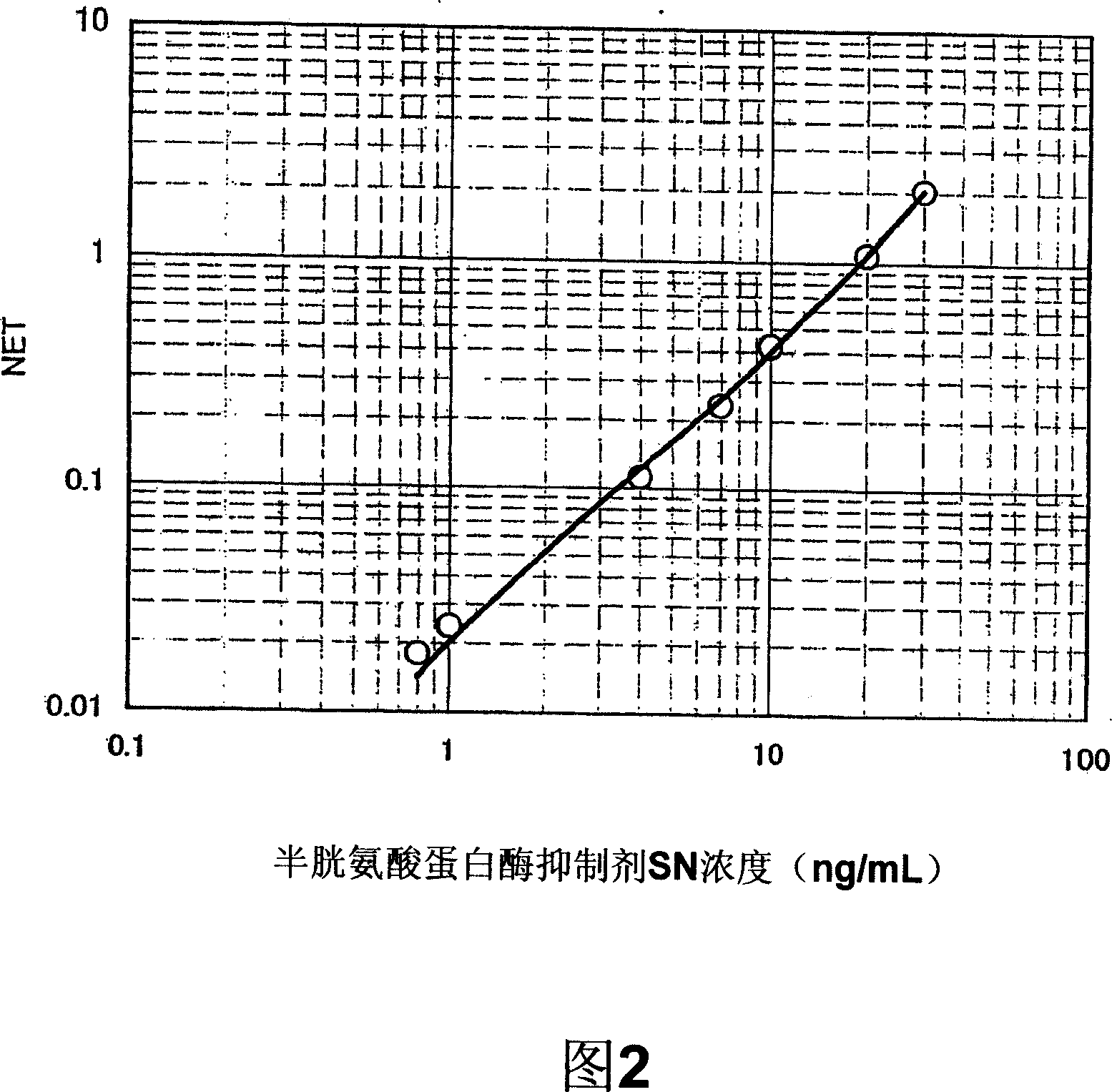Drug for diagnosing colon cancer and/or colon polyp, observing postoperative course and monitoring reoccurrence
A technology for colorectal polyps and colorectal cancer, applied in the field of diagnosing drugs and monitoring drugs, can solve the problems of increasing medical expenses and the like
- Summary
- Abstract
- Description
- Claims
- Application Information
AI Technical Summary
Problems solved by technology
Method used
Image
Examples
Embodiment 1
[0108] Example 1 (cloning of cDNA of Cystatin SN)
[0109] In order to produce a monoclonal antibody against cystatin SN, its antigen was produced. First, cloning of the sequence containing the full-length ORF region of cystatin SN was attempted. The salivary gland single-stranded cDNA library, which is a cystatin SN-expressing tissue, was prepared in the same manner as above, and used as a template, using primers Cystatin SN-f (SEQ ID NO: 3) and Cystatin SN designed according to GenBank number (NM 001898) -r (SEQ ID NO: 4), isolate the full-length ORF gene by PCR method. Then, using the cystatin SN full-length sequence as a template, Cystatin SN-F (Hind) primers (SEQ ID NO. 5) and Cystatin SN-R (His-BamHI) primer (SEQ ID NO: 6), the target fragment was amplified again by PCR method, and inserted into phCMV vector (Stratagene). After performing base sequence analysis by a conventional method, the fragment cut at the HindIII and BamHI sites was inserted into the phCMV vector...
Embodiment 2
[0110] Embodiment 2 (preparation of cysteine protease inhibitor SN antigen)
[0111] According to the experimental design of TransIT (TaKaRa Corporation), 1 × 10 5 Cell CHO cells were seeded in 6-well culture dishes and cultured overnight. On the next day, 8 μg of the expression vector phCMV-Cystatin SN-His and 16 μL of TransITreagent were mixed in 100 μL of serum-free DMEM medium, and incubated at room temperature for 20 minutes, and then added to cell culture medium for transfection. In addition, when using FUGENE6, according to the experimental design of Roche Diagnostics, 8×10 5 The CHO cells of the cell were inoculated in a 10cm culture dish and cultured overnight. On the next day, 8 μg of the expression vector phCMV-Cystat was used when using FUGENE6. According to the experimental design of Roche Diagnostics, 8×10 5 Cells in SN-His and 16 μL of FUGENE6 reagent were mixed in 400 μL of serum-free DMEM medium in a 10 cm dish, incubated at room temperature for 20 minutes...
Embodiment 3
[0113] Example 3 (production of cysteine protease inhibitor SN monoclonal antibody)
[0114] Cystatin SN-His equivalent to 100 μg of protein suspended in PBS was mixed with Freund's complete adjuvant, and injected intraperitoneally into BALB / c mice to perform primary immunization. Similarly, the prepared Cystatin SN-His equivalent to 50 μg of protein and Freund's complete adjuvant were mixed and injected intraperitoneally, thereby implementing the second immunization. Cystatin SN-His equivalent to 50 μg of protein was injected intravenously for final immunization. Splenocytes were prepared from this mouse, and cell fusion with mouse P3U1 cells was carried out by a usual method using polyethylene glycol. Screening is performed by ELISA using Cystatin SN-His to produce specific binding antibodies.
[0115] Through this screening, monoclonal antibodies PPMX0201 and PPMX0202 with high specificity to the cysteine protease inhibitor SN were successfully produced. Since PPMX020...
PUM
 Login to View More
Login to View More Abstract
Description
Claims
Application Information
 Login to View More
Login to View More - R&D
- Intellectual Property
- Life Sciences
- Materials
- Tech Scout
- Unparalleled Data Quality
- Higher Quality Content
- 60% Fewer Hallucinations
Browse by: Latest US Patents, China's latest patents, Technical Efficacy Thesaurus, Application Domain, Technology Topic, Popular Technical Reports.
© 2025 PatSnap. All rights reserved.Legal|Privacy policy|Modern Slavery Act Transparency Statement|Sitemap|About US| Contact US: help@patsnap.com



